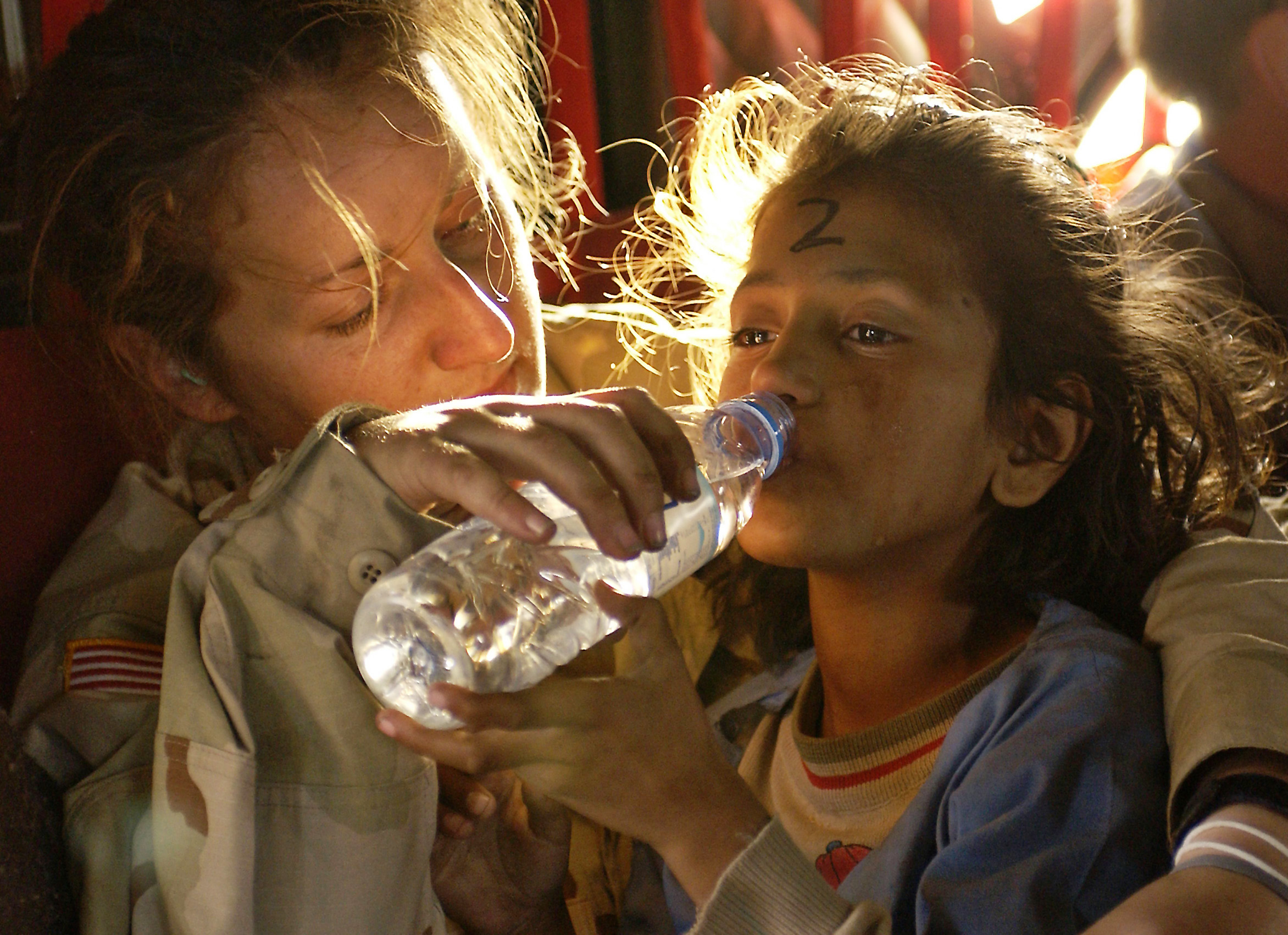5 Countries That Show Development Assistance is a Two-Way Street
 The Development Assistance Committee (DAC) is a division of the Organisation for Economic Co-operation and Development (OECD). It facilitates economic development worldwide, partly by providing financial assistance to developing countries. The DAC currently has 30 members, including the U.S., Japan and the European Union. According to analysis organization DevelopmentAid, 155 countries received development assistance from these members and of other non-member donors in 2018.
The Development Assistance Committee (DAC) is a division of the Organisation for Economic Co-operation and Development (OECD). It facilitates economic development worldwide, partly by providing financial assistance to developing countries. The DAC currently has 30 members, including the U.S., Japan and the European Union. According to analysis organization DevelopmentAid, 155 countries received development assistance from these members and of other non-member donors in 2018.
Development Assistance Programs
Official Development Assistance (ODA) distributes financial assistance annually to low-income, lower-middle- and upper-middle-income status countries. Eligibility is based on national per capita income. Countries transcend eligibility once they exceed the high-income threshold set by the World Bank for three consecutive years. The highest Gross National Income (GNI) was $12,376 as of 2018.
Many countries have graduated from being ODA recipients to become donors themselves. Researchers from the Overseas Development Institute found countries become donors when possible both out of morality and the recognition that aid can “lubricate commercial, trade and investment opportunities” for a donor country. But, it’s not just high-income countries that recognize this. Some nations have become development donors even while still being ODA recipients. Below are five such countries that are both aid donors and recipients simultaneously, proving foreign aid is often a two-way street.
Five Countries That Prove Foreign Aid is a Two-Way Street
- Brazil. With a 2019 GNI of $9,130 dollars, Brazil is an upper-middle-income country. It is an ODA recipient, receiving about $430 million in net ODA and official aid in 2018. According to the data organization Development Initiatives, Brazil’s biggest donors are Japan, Norway and Germany. Most of its ODA capital is directed to improving water and sanitation, agriculture and food security and infrastructure. However, Brazil has long been a donor nation, too. In 2010, the Brazilian government found that from 2005-2009 the country invested “more than $1.8 billion dollars into international development” efforts. In 2010 alone, Brazil disbursed $1 billion in aid abroad. One year later, it received that same amount itself in ODA financing. Brazil’s donations largely go to Latin America, the Caribbean and sub-Saharan Africa, particularly for peacekeeping and humanitarian purposes.
- South Africa. South Africa is an upper-middle-income ODA recipient with a 2018 GNI of $5,750. It received about $915 million in net ODA and official aid in 2018. In 2011, it received $1.5 billion, but it disbursed $209 million, according to Development Initiatives. Accurate assessments of total contributions and contribution breakdowns are hard to acquire because South Africa’s foreign aid programs are managed by various government organizations. Nevertheless, the country has several successful programs like the African Renaissance and International Cooperation Fund, which have steadily increased contributions since launching in 2001. South Africa’s foreign aid primarily fosters development across Africa. Conversely, as an ODA recipient, the country gets most of its ODA aid from the U.S., EU Institutions and Germany. It is directed primarily toward health issues.
- India. As of 2018 data, India is considered a lower-middle-income country. Its GNI for 2019 was $2,130, an all-time high for the country. However, as a nation far from the high-income threshold, it still receives substantial foreign aid. In 2018, it received $2.45 billion in ODA and official aid. The biggest ODA donors to India are the International Development Association, Japan and Germany. These funds are primarily spent on improvements in infrastructure, health and education. However, in 2011, while India took the third-largest share of ODA aid with $5.4 billion received, it also became the sixth-largest non-DAC member donor country. It disbursed $787 million toward international development cooperation. India’s contributions primarily support technical and economic development in Africa.
- Chile. Chile was removed from the ODA eligibility list in 2018, having reached high-income status. It remained at $14,670. However, before achieving this status, Chile’s international development cooperation had been bilateral. The country was helping other nations throughout the world. Though its main beneficiaries are in Latin America and the Caribbean, Chile disburses money to a variety of areas for various purposes as needed. For example, it contributed $100,000 toward the crisis in Syria. The OECD estimated that in 2010, Chile’s overall contributions reached $42 million. However, it still received ODA at that time. In 2012, Chile was an upper-middle-income country and received $126 million in net ODA, largely from France and European Union institutions.
- Indonesia. With a 2018 GNI of $3,840, Indonesia is a lower-middle-income country that received just under $950 million in ODA and official aid in 2018. In 2011, Indonesia received $3.7 billion, making it the tenth-largest recipient of ODA. Japan is its largest donor. Almost 25% of all aid goes toward improving the country’s infrastructure. Despite still receiving such a large amount of foreign aid, Indonesia is seeing some growth. ODA’s share of national GNI has steadily decreased while government spending has increased. Moreover, in 2019, Indonesia created the Indonesian Agency for International Development to ramp up the country’s own participation in foreign aid. The agency will manage a $283 million endowment fund the government has set aside for development cooperation.
Development assistance benefits both national and global economies because it allows countries that don’t have sufficient funds internally to build domestically as well as participate in trade with other nations. This supports the logic in development aid flowing both ways in several countries. Brazil, South Africa, India, Chile and Indonesia are just five countries that exemplify such a circumstance.
– Amanda Ostuni
Photo: Wikimedia
